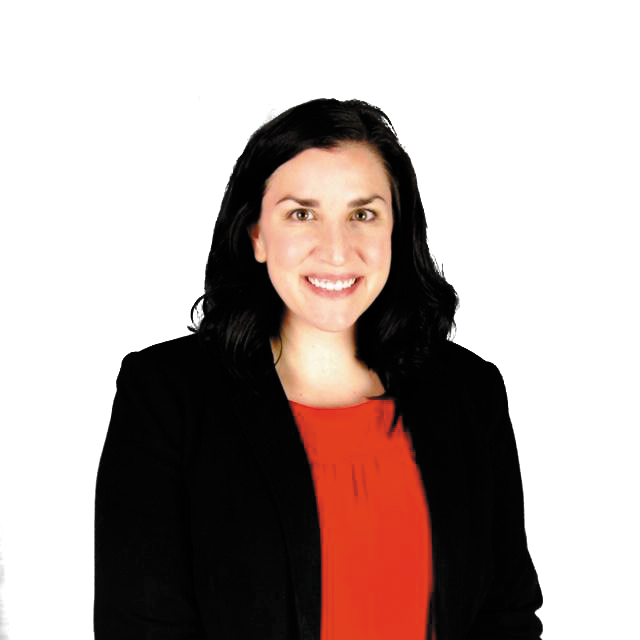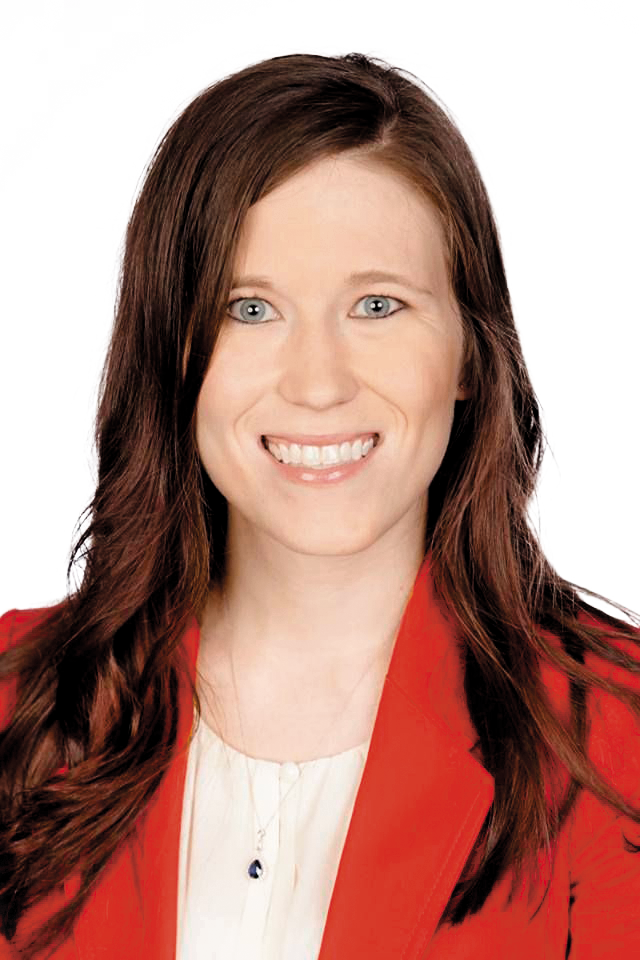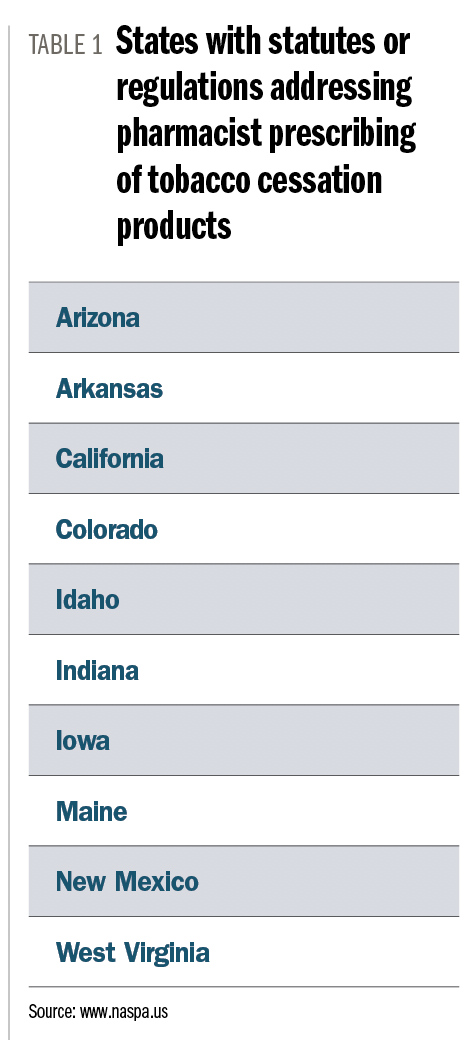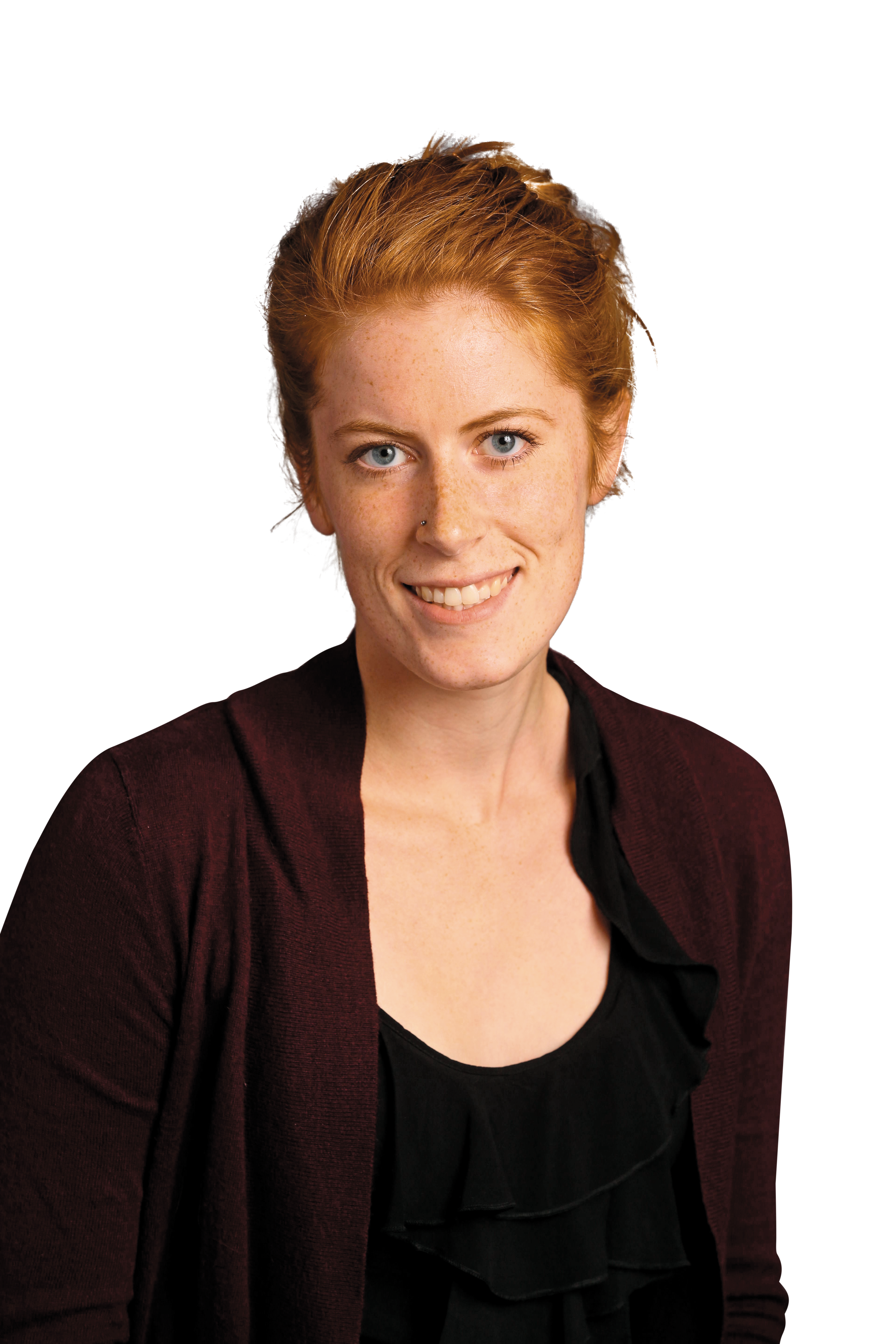Six New Clinical Services for Pharmacists
Pharmacogenetic testing, contraceptives, and more!

Katie Lord, PharmD

When I was a pharmacy student two decades ago, I met an acquaintance who asked what I was studying. As I described the pharmacy school curriculum, her response was incredulous: “You need to know all that to put pills in a bottle?”
These days, community pharmacists are far beyond putting pills in a bottle and have many opportunities to use their drug knowledge to provide services for patients. What a pharmacist is allowed to do varies from state to state with differing regulations, but these services allow pharmacists to increase their clinical interactions with patients while generating additional revenue streams.
Pages 2-7: New Services | Skip to Discussion
Erica Burman, PharmD

Kevin Day, PharmD

1.) Point-of Care (POC) Testing for Flu and Strep
There are many Clinical Laboratory Improvement Amendments (CLIA)-waived tests that can be provided in a pharmacy setting, with strep and flu tests being particularly attractive to patients. In states where pharmacies can set up collaborative practice agreements (CPAs) with physicians to allow them to prescribe antibiotics and antivirals, patients can have these drugs dispensed immediately after positive POC testing.
Trending: Walmart Layoffs Impact Senior Staff
Erica Burman, PharmD, pharmacist manager at Goodrich Pharmacy in St. Francis, MN, reports that patients are “surprisingly” happy to pay the out-of-pocket fee of $40 for strep tests and $60 for flu tests. “They find that ultimately they are saving money because of the time they save with improved access to care,” she says.
Kevin Day, PharmD, clinical director and pharmacist at Day’s Miami Heights Pharmacy in Cincinnati, which recently implemented POC flu testing, cautions that pharmacists must be mindful of their limitations. The flu test protocol at Day’s Pharmacy’s flu excludes them from testing patients who are at higher risk of developing flu complications, including the very young and very old and those with preexisting lung disease. These patients are referred to their physicians for testing.
Continue Reading on Page 3 | Return to Slideshow
Cortney M. Mospan, PharmD

2.) Expanded Immunization Programs
“Immunizations have become a mainstay for community pharmacy,” says Suzanne Higginbotham, PharmD, “but we’re trying to teach pharmacists to not just give a flu shot, but to perform an entire immunization needs assessment on patients.” Higginbotham is the director of the Center for Pharmacy Care, Residency Programs and Continuing Pharmacy Education at Duquesne University in Pittsburgh. According to the National Alliance of State Pharmacy Associations (NASPA), 48 states, the District of Columbia, and Puerto Rico allow pharmacists to administer any vaccine, although some require prescription, and some have limitations by patient age. The exceptions are New Hampshire, New York, West Virginia, and Wyoming, which have limitations on what vaccines are allowed.
Read More: Chains Closing Stores, Opening Fewer
Cortney M. Mospan, PharmD, assistant professor of pharmacy at Wingate University School of Pharmacy in Wingate, NC, says that adults often don’t realize that they should be receiving other immunizations in addition to the flu vaccine. At the independent pharmacy where Mospan practices part-time, pharmacists check the state immunization registry as they fill prescriptions and use CDC guidelines to make patient-specific recommendations based on the patients’ diagnoses or inferred from their prescriptions.
Day’s Pharmacy’s expanded immunization program is hampered by Ohio’s immunization registry, which is “not robust,” Day says. His staff has been recommending Shingrix to all patients over age 50. Due to local outbreaks of hepatitis A, they also urge patients to check whether they have been immunized for it and, if not, to receive the vaccine.
Continue Reading on Page 4 | Return to Slideshow
Jennifer Helmke, PharmD

3.) Long-Acting Injectable Drugs
In states that allow pharmacists to administer intramuscular and subcutaneous injections, pharmacies can serve as alternate injection sites for long-acting injectable antipsychotic agents (LAIAs) and other medications. This can occur under CPAs with mental health practitioners or through partnerships with LAIA manufacturers. Jennifer Helmke, PharmD, pharmacy manager at Bremo Pharmacy in Richmond, VA, reports that manufacturers that partner with Bremo refer patients to the pharmacy to receive their injections and assist with patient reminders. Administration fees are either paid by the manufacturer or the pharmacy charges the patient a $20 injection fee.
Trending: Opioid Prescriptions Are Still Prolific, But Deaths Fall
Bremo provides other injections as well, Helmke notes. For example, under a protocol developed with a local women’s health center, pharmacists there can administer one-time methotrexate injections for women with ectopic pregnancies.
Continue Reading on Page 5 | Return to Slideshow
Neil Leikach, RPh

States that address pharmacist prescribing of tobacco cessation products

4.) Smoking Cessation Counseling
“We see patients monthly, and we see them outside smoking,” says Neil Leikach, RPh, owner of Your Community Pharmacy in Catonsville, MD, “and if they want to stop, we can help them.” There are various ways pharmacies can implement smoking cessation counseling. In fact, several states currently have statutes or regulations addressing pharmacist prescribing of tobacco cessation aids (see Table 1).
Good Day Pharmacy, which has nine locations in northern Colorado, has developed a protocol through which pharmacists provide 30-minute consultations with patients to discuss their smoking cessation options, including OTC nicotine replacement products and drugs the pharmacists can prescribe, reports Vickilee Einhellig, RPh, president and CEO of Good Day. There is a $45 consultation fee paid by the patient, she says, but the prescription drug dispensing is covered by insurance, and a new Medicaid regulation provides payment for OTC nicotine replacement products as well.
Read More: Understanding and Treating Postherpetic Itch
Although pharmacists in Georgia do not have prescribing rights, Katie Lord, PharmD, clinical pharmacist at Barney’s Pharmacy in Augusta, GA, has been running the pharmacy’s smoking cessation program for the past five years. She describes the pharmacist’s role as the accountability partner for patients who want to quit smoking. The pharmacy recruits patients for the program using reports of patients who received smoking cessation products the previous month; other patients join by their own request. “We act as a liaison between the patient and physician” if they want to get a prescription, Lord explains. Pharmacists follow up with patients every month and applaud their successes. The program is provided as a free community service, but Lord hopes that in the future there will be avenues for reimbursement.
Continue Reading on Page 6 | Return to Slideshow
States that allow pharmacist prescribing for oral contraceptives

5.) Contraceptive Prescribing
In an effort to improve access to contraceptives and reduce unintended pregnancy rates, there is a nationwide push to allow pharmacists to prescribe hormonal contraceptives. (See: Birth Control Services Help Attract and Keep Patients) Colorado is one of 10 jurisdictions with statutes or regulations that allow pharmacists to prescribe contraceptives, according to NASPA. (See Table 2.) Pharmacists at Good Day Pharmacy provide 30-minute consultations, after which the patient can be prescribed and dispensed a contraceptive, says Einhellig. The $45 consultation fee is paid by the patient. Prescriptions can be refilled for up to a year, and patients are required to be seen by a healthcare practitioner every three years, she adds.
Trending: 5 New Pharmacy Rules and Regulations to Watch
In Maryland, where pharmacists have recently started prescribing contraceptives, both Medicaid and a major private insurer have announced that they will be paying pharmacists a separate fee for prescribing contraceptives, Leikach reports.
Continue Reading on Page 7 | Return to Slideshow
Elise Durgin, PharmD

6.) Pharmacogenetic Testing
Pharmacists’ knowledge of pharmacokinetics, drug transport, and drug metabolism make them ideally suited to become involved in the expanding field of pharmacogenetic testing, says Elise Durgin, PharmD, PGY1 ambulatory care resident at University of Minnesota College of Pharmacy and Goodrich Pharmacy. Genetic differences in metabolism may mean that a patient needs a higher or lower dose of a particular drug or should be prescribed a completely different drug, Helmke says. For patients who are not responding well to certain drugs, particularly mental health drugs, pharmacogenetic screening can identify why this is happening, Durgin explains. Pharmacists perform a buccal swab and send it to a laboratory for testing. They then receive a pharmacogenetic report, which is used for a discussion with the patient and for recommendations for the prescriber. (Pharmacogenetics is also called pharmacogenomics.)
Read More: New GOLD Strategies for COPD Management
Goodrich Pharmacy provides pharmacogenetic testing to select patients as part of their medication therapy management (MTM) program; in some cases, this is covered by insurance, says Durgin, while other patients pay out-of-pocket at a rate of $65 for the first 15 minutes of counseling and $30 for each additional 15 minutes. The laboratory bills separately. Bremo Pharmacy charges patients $399 for pharmacogenetic testing and consultation.
“The nice thing about it is your genes don’t change, so you do it once and you have it forever,” Helmke notes. As more pharmacogenetics studies are completed and more drugs are added to that database, she explains, the information can be added to the patient’s profile.
â
Continue Reading on Page 8 | Return to Slideshow
Implementing New Services
If you are considering adding new clinical services to your pharmacy, understanding local pharmacy regulations is key. “If you don’t keep abreast of what’s happening in your state and other states, you may not realize things have changed,” Leikach says.
You may also need to become involved in advocating for more clinical services in the pharmacy. Leikach encourages pharmacists to become advocates for these new services in their states. “Talk to your delegates, have them come into your pharmacy, write a letter, call them on the phone. Some way or another you have to be involved.”
Before implementing a new clinical service, pharmacists must learn as much as possible about it from experienced colleagues. Business and workflow plans are important to ensure the financial feasibility of a service, and Mospan recommends trying out the proposed service on a pharmacy staff member. “Sometimes you don’t realize the issues you’re going to have either in workflow or feasibility until you actually run that service,” she notes.
Trending: Pharmacists at the FDA: Drug Information Specialists
Proper scheduling of new services is essential. Goodrich Pharmacy initially offered POC testing on a walk-in basis, Burman recalls, but they soon realized that this interfered with workflow, particularly if several patients came at one time. Now POC walk-in hours are scheduled for times when there is pharmacist overlap.
“The whole team has to be on board, from answering the phones for the initial call,” Einhellig says. She stresses the importance of developing protocols so the services are consistent across the pharmacy team. Technicians should be effectively used so that the pharmacist only needs to be with the patient when his/her knowledge is necessary to make the clinical assessment and judgment, Mospan says.
Pharmacy students and residents can also be an important resource. At Goodrich Pharmacy, residents provide many of the clinical pharmacy services, Durgin says. “A resident doesn’t cost as much as a salaried pharmacist, so I have a lot more flexibility to make contact with patients and provide the services,” she notes. Lord involves the pharmacy students she precepts in smoking cessation counseling.
Training requirements for different clinical services vary from state to state. New graduates are quite familiar with many of these services. “In our last year of pharmacy school, we offer certificate programs in enhanced care services,” Higginbotham says. For more seasoned pharmacists, there are many continuing education and certification programs to learn the necessary skills.
Spreading the Word
To attract patients for these clinical services, pharmacists need to effectively market them. Many people still have a narrow view of the pharmacy’s role, Mospan says. Marketing methods include social media, on-hold messages, bag stuffers, local media appearances, and even marching in a community parade.
“You really need to use other healthcare avenues in your community to drive referrals to your pharmacy,” Mospan says. She visits local independent medical practices to describe the services her pharmacy offers and discuss how they might collaborate to meet their patients’ needs. Day says he spoke to many local prescribers before introducing POC testing to make sure they were on board.
Read More: ASHP Releases New Guidelines for Perioperative Pharmacists
Many physicians are “excited that we can help with flu shots or these types of consultations, because they are so busy too, and have a hard time keeping up with their patients,” Einhellig observes, but she cautions that in small towns, pharmacists should talk to local physicians to ensure they are not stepping on toes. “We’ve done a pretty good job as a profession owning and driving immunizations,” Mospan says, “so I think more and more providers are wanting to get rid of the vaccine business and have pharmacies and other points-of-care take care of that.”
The Bottom Line
Are these clinical services a significant source of revenue? Not always-and especially not when they are just starting, experts say. But they are hopeful that new opportunities for reimbursement will emerge as insurers recognize the value of pharmacists’ contributions to healthcare.
Clinical services can attract patients to a pharmacy along with all their prescriptions and other purchases. Although Barney’s Pharmacy provides smoking cessation counseling as a free service, Lord explains, “these patients are hardly ever just here for the smoking cessation, they’re here for the whole picture, and if we can help them quit smoking we’ve got a patient for life.”
Point-of-Care testing is “definitely not our primary revenue at this point,” Burman says, “but in independent pharmacy a little bit here and a little bit there can help the business grow.”